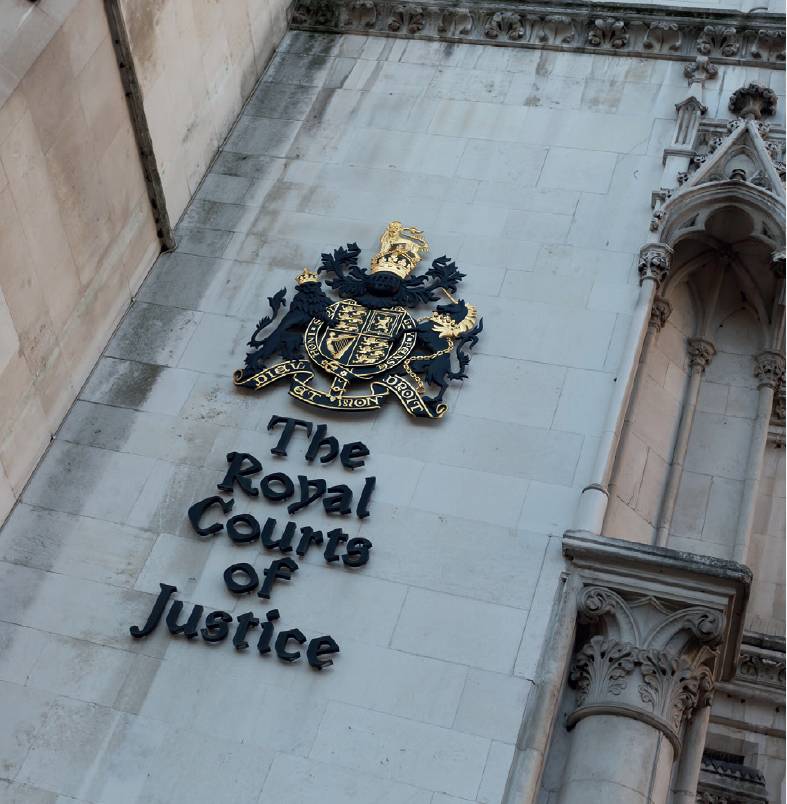Administration of justice
HMCTS updates court security materials
HM Courts and Tribunals Service (HMCTS) has just launched revised materials aimed at setting expectations and restating the general principles of security searches.
 About the author: Susan Acland-Hood is chief executive of HM Courts and Tribunals Service.
About the author: Susan Acland-Hood is chief executive of HM Courts and Tribunals Service.
Many hundreds of thousands of people pass through our courts and tribunals every year. For many of us - legal practitioners, court staff and employees, the judiciary, the police, and prison and probation colleagues to name but a few - these buildings are our daily workplaces.
But courts are - by their very nature - places where people bring their disputes, and where emotions may run high. In the criminal courts, we deal with those accused of serious crimes, and for whom the stakes are high, as well as those who may be in court for more minor offences but live complex and troubled lives, some of whom may be characterised by poor impulse control. This environment means that in court every day there are risks to individuals’ personal security.
Robust security processes
Shortly after I joined HMCTS, in 2016, there was a spate of serious incidents involving weapons being brought into courts. As a result, we tightened up our search procedures across the whole estate.
Last year, reflecting on the rise of acid attacks on the streets, we - in common with most executive agencies and public bodies operating at a similar level of security and in response to professional recommendations - changed our security advice to recommend that liquids being brought into court buildings should be subject to ‘sip tests’ unless they were in sealed cartons or cans. Upon independent advice, we also applied this instruction to sealed bottles, on which it is often diÿcult to tell whether the seal is actually intact.
Making sure that our processes are robust - and reflect the latest risks - is the right thing to do. We know that, although they are in the minority, people do sometimes come to court with the intent to harm themselves or others. We also know that people, including those for whom it is their workplace, can unwittingly attend court with items which could be used by others as a weapon, for example, a small penknife or metal cutlery; so, asking people not to bring dangerous items to court is not a reflection of our expectations about their personal behaviour.
Security statistics and trends
The statistics and trends captured by our security teams across England and Wales bear testament to the threats and challenges that we, at HMCTS, face every week as we manage the court estate.
From April 2017 to March 2018, a total of 352,803 banned items were confiscated or removed by security staff, including:
- 88 firearms, including replicas and other items, such as defence sprays, CS gas and cartridges;
- over 26,000 tools;
- more than 9,000 knives;
- over 16,000 sharps, including syringes, scissors, craft tools and blades; and
- alcohol, which was removed from people entering court buildings over 20,000 times.
In recent years, security staff have reported a growing rise in incidents of harm or attempted harm to others. In 2018, there were:
- 53 reported incidents of aggressive contact or assault on security oÿcers, judges and magistrates; and
- 103 incidents of self- harm.
Particular challenges differ according to the court. Magistrates’ courts recorded the highest occurrence of physical security incidents, reported at 28% in 2018, with crown courts accounting for 13%, and civil courts accounting for 10%.
It is the responsibility of all of us, who are part of the justice system - in whatever capacity - and use our buildings, to remain vigilant and respect the role that our frontline security oÿcers play in ensuring that our courts are open, safe and welcoming environments.
Communications materials
 It is partly in response to the security incident figures that we are implementing revised materials developed in collaboration with our security contractors. The materials are there to give more consistent and transparent information about security processes and searches, so that all court users and workers know what to expect and understand the rationale behind them.
It is partly in response to the security incident figures that we are implementing revised materials developed in collaboration with our security contractors. The materials are there to give more consistent and transparent information about security processes and searches, so that all court users and workers know what to expect and understand the rationale behind them.
We will also be using elements of the materials as a training tool for our security contractors, so that we can continue to reinforce the importance of processes being applied consistently, regardless of the location or prior knowledge of those entering a building. The materials will feature a mix of media, including posters in courts, video and social media content, and will begin to appear throughout May.
Addressing legal professionals’ concerns
For legal professionals, these materials will also help to address recent concerns about the implementation of security checks where they cause queues getting into our buildings (despite us adding extra oÿcers and security arches where we can), where checks are perceived as unnecessary, and where frustrations have been voiced about personal items being confiscated.
We are also well aware of the instances, particularly those reported on social media, where searches and confiscations have not felt as respectful or proportionate as we should all expect.
These are all issues that we take very seriously, and we will continue to investigate every reported incident thoroughly and take any necessary action as swiftly as possible. Additionally, we have made it easier for court users to give us feedback on their experience of the security search process, which we welcome, and reissued guidance to court staff on how these should be progressed.
I have also been asked to consider arrangements which would allow professionals to use ID to enter courts without being searched, recognising that courts are their place of work and respective professional codes of conduct mean that if they commit not to bring prohibited things into court, we can have greater trust they will not do so.
Professional access scheme
As many of our frequent visitors to courts may be aware, we ran a pilot of this professional access scheme, trialing it first in five courts, and then expanding it to 10 courts (where the scheme continues). This enables practitioners, who register for the scheme, to enter courts and tribunals without the need for a security search.
To make sure that the scheme could not be abused, we needed a simple, yet secure identification system, with two-factor authentication. We also needed professional bodies to lead on holding the lists of who was - and was not - a recognised legal professional. The Bar Council successfully devised a digital ID card which met HMCTS requirements, and this contributed to the success of the pilot.
We have been continuing to work with the legal sector and professional bodies, given that they rightly have responsibility for holding up-to-date and checked lists of those who are recognised members, against which we can check in a streamlined enough way to make the scheme work at scale.
We will be announcing full details of the tiered national implementation of the scheme next week.
Tolerance and respect
In the meantime, the work around enhancing our existing security processes is designed both to explain why and how we search more effectively, and to support everyone involved in treating each other with respect and patience.
• You can read guidance on what items you can take into a court or tribunal building at HMCTS’ gov.uk pages, visit: https://www.gov.uk/entering-court-or-tribunal-building
 About the author: Susan Acland-Hood is chief executive of HM Courts and Tribunals Service.
About the author: Susan Acland-Hood is chief executive of HM Courts and Tribunals Service.